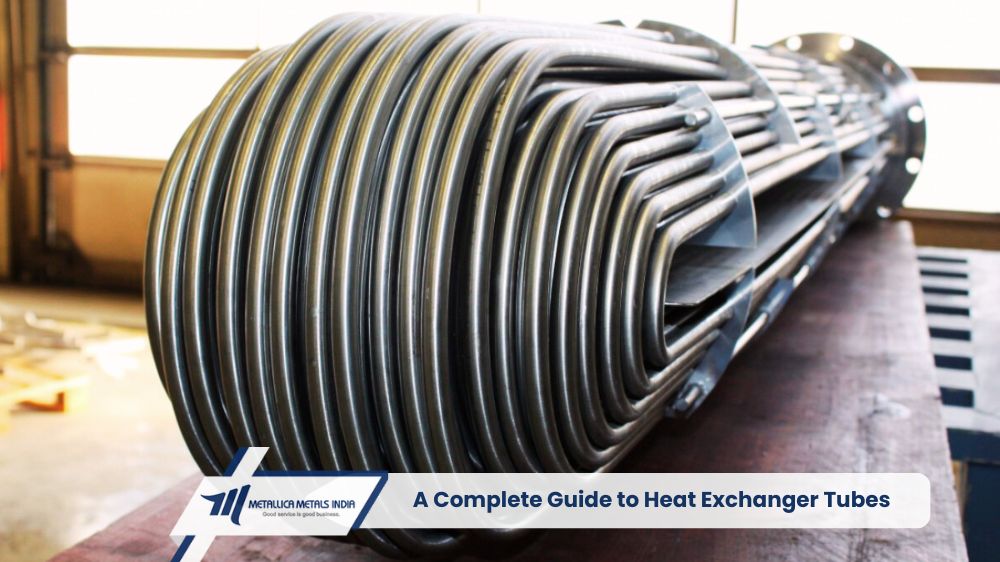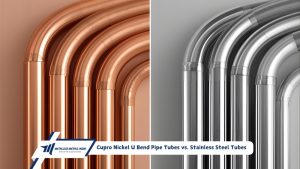Heat exchanger tubes play a vital role in various industries, ensuring efficient heat transfer between fluids without direct contact. These tubes are widely used in applications such as power plants, chemical processing, oil & gas, and HVAC systems. Their primary function is to enhance thermal efficiency while maintaining durability and resistance to corrosion.
Choosing the right heat exchanger tubes is essential for optimizing performance, reducing maintenance costs, and increasing the lifespan of the system. Factors such as material selection, tube design, and industrial application determine their effectiveness.
In this comprehensive guide, we will explore different types of heat exchanger tubes, their applications, benefits, and how to choose the best option for your specific needs.
Types of Heat Exchanger Tubes
Heat exchanger tubes come in various materials and designs, each suited for different applications. Below are the most common types:
1. Stainless Steel Heat Exchanger Tubes
Stainless Steel Heat Exchanger Tubes is a popular choice due to its excellent corrosion resistance, durability, and ability to withstand high temperatures. Common stainless steel grades include:
- SS 304 / 304L – Offers good corrosion resistance and is widely used in general applications.
- SS 316 / 316L – Provides enhanced resistance to harsh chemicals and extreme temperatures.
- SS 321 / 321H – Contains titanium for increased stability in high-temperature environments.
2. Duplex & Super Duplex Steel Tubes
Duplex stainless steel tubes offers higher strength and better corrosion resistance than conventional stainless steel. Super duplex grades provide even greater performance in extreme conditions. These are widely used in the oil & gas and marine industries.
3. Nickel & Inconel Heat Exchanger Tubes
Nickel-based alloys like Inconel 600 and Incoloy 825 offer superior corrosion and oxidation resistance. These tubes are ideal for high-temperature applications in chemical and power plants.
4. Copper & Cupro-Nickel Tubes
Copper-based tubes are known for their excellent thermal conductivity and corrosion resistance. Cupro-nickel alloys (90/10 and 70/30) are specifically used in marine applications due to their resistance to biofouling.
5. Carbon & Alloy Steel Heat Exchanger Tubes
Carbon steel tubes like ASTM A179 and A210 are cost-effective options for applications where corrosion is not a primary concern. Alloy steel variants offer improved mechanical strength and thermal resistance.
6. Titanium & Hastelloy Heat Exchanger Tubes
Titanium tubes (Grade 2 & Grade 5) are widely used in aerospace, desalination plants, and offshore industries due to their lightweight and corrosion-resistant properties. Hastelloy tubes (C22 & C276) are preferred for highly acidic and corrosive environments.
Uses of Heat Exchanger Tubes
Heat exchanger tubes are integral to many industrial applications, including:
1. Power Generation
Heat exchanger tubes play a crucial role in power plants, especially in boilers, condensers, and heat recovery systems, where they enhance energy efficiency.
2. Chemical Processing
Industries that handle aggressive chemicals rely on corrosion-resistant tubes to maintain safe and efficient thermal exchange.
3. Oil & Gas Industry
Heat exchanger tubes are used in refineries and offshore platforms for heating and cooling processes, ensuring operational stability.
4. HVAC & Refrigeration Systems
These tubes help regulate temperature in commercial and residential buildings, improving energy efficiency.
5. Marine Applications
Cupro-nickel and duplex steel tubes are extensively used in shipbuilding and offshore structures due to their resistance to seawater corrosion.
6. Food & Beverage Industry
Heat exchanger tubes are used in food processing plants to maintain required temperatures while ensuring hygiene and safety.
Benefits of Heat Exchanger Tubes
1. Efficient Heat Transfer
High-quality tubes enhance the thermal exchange process, reducing energy consumption and operational costs.
2. Corrosion Resistance
Materials like stainless steel, duplex steel, and nickel alloys ensure longevity, even in harsh environments.
3. High Durability
Premium heat exchanger tubes withstand high pressure and temperature fluctuations, ensuring long service life.
4. Versatility
These tubes come in different materials and designs, making them suitable for a wide range of industrial applications.
5. Low Maintenance
High-quality tubes reduce the need for frequent replacements and repairs, improving system reliability.
Factors to Consider When Choosing Heat Exchanger Tubes
1. Material Selection
The choice of material depends on the working environment. For example:
- Stainless Steel – Ideal for corrosion resistance and durability.
- Nickel Alloys – Suitable for high-temperature and chemical processing applications.
- Copper & Cupro-Nickel – Best for applications requiring high thermal conductivity.
2. Operating Conditions
Consider factors like pressure, temperature, and exposure to corrosive substances when selecting tubes.
3. Tube Design
Tubes can be seamless or welded, finned or smooth, depending on the application. Seamless tubes offer higher strength, while finned tubes improve heat transfer efficiency.
4. Cost-Effectiveness
While high-end materials offer better performance, choosing cost-effective alternatives without compromising quality is crucial.
Maintenance and Cleaning Tips for Heat Exchanger Tubes
Regular maintenance ensures optimal performance and extends the lifespan of heat exchanger tubes.
1. Routine Inspection
Periodic checks help identify issues like corrosion, scaling, and leakage.
2. Cleaning Methods
- Chemical Cleaning – Removes deposits using acid or alkaline solutions.
- Mechanical Cleaning – Uses brushes and scrapers to eliminate scale buildup.
- Hydroblasting – High-pressure water jetting for deep cleaning.
3. Preventive Measures
Using corrosion-resistant materials, applying protective coatings, and controlling fluid properties help in reducing wear and tear.
Conclusion
Heat exchanger tubes are critical in industries requiring efficient thermal management. Their material, design, and maintenance directly impact system performance and longevity. Whether you need stainless steel, duplex steel, copper, or titanium tubes, choosing the right type is essential for efficiency and durability.







